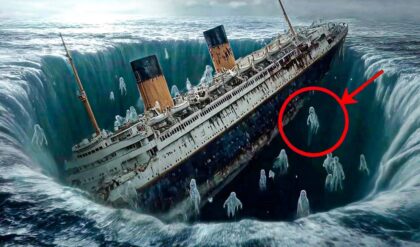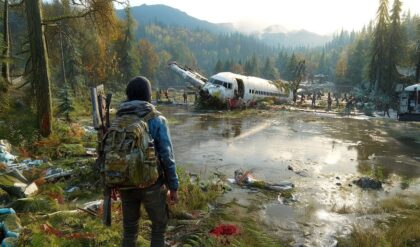“AAA is broken, and we proved it!” Clair Obscur’s Triumph Ignites a Firestorm in Game Media—Uncover the Controversy!
Clair Obscur: Expedition 33, the breakout JRPG from Sandfall Interactive, has taken the gaming world by storm, selling millions and earning universal acclaim. But its success, achieved with a modest budget and a small team, has rattled the AAA industry’s foundations, exposing the inefficiencies of bloated budgets and corporate bloat. Now, the game faces a backlash from some game media outlets, with accusations of “overhype” and “problematic” themes sparking heated debates. Is Clair Obscur a revolutionary wake-up call or a target of industry pushback? Dive into the drama and see why this French gem is shaking up gaming—read on to join the fight!

A Game That Defies the AAA Mold
Released on April 24, 2025, Clair Obscur: Expedition 33 is a turn-based RPG with real-time mechanics, set in a Belle Époque-inspired world ravaged by the Paintress, a deity who erases people by age each year. Developed by Sandfall Interactive, a French studio of roughly 30 core members, the game sold 3.3 million copies in 33 days, hit a Steam peak of 145,063 concurrent players, and earned a 9.7/10 user score on Metacritic, making it 2025’s highest-rated game. Its $50 price tag and 25-35 hour runtime contrast sharply with the $80, 100-hour blockbusters dominating the AAA space.
The game’s success challenges the AAA model, which often demands budgets exceeding $200 million and teams of hundreds. Sandfall’s founder, Guillaume Broche, a former Ubisoft developer, has openly criticized AAA bloat, stating it would have taken “25 years” to get Clair Obscur approved at a major studio. With a reported budget of $18-28 million, the game delivers AAA-quality visuals using Unreal Engine 5, a gripping story, and innovative combat blending turn-based strategy with real-time dodges and parries. This efficiency has led fans to hail it as proof that AAA’s obsession with scale is unsustainable, sparking a broader conversation about the industry’s future.
The Media Backlash
Despite its acclaim, Clair Obscur has faced scrutiny from some game media outlets, with criticisms ranging from its difficulty to its narrative themes. Certain publications have labeled the game’s combat, which requires precise timing for parries and dodges, as “unfairly punishing,” arguing it alienates casual players. Others have taken issue with the story’s dark tone, particularly its exploration of mortality and grief, with one outlet suggesting it “glorifies despair” or contains “problematic” depictions of sacrifice. These critiques often frame the game as overhyped, questioning whether its 9.7 Metacritic score reflects genuine quality or fan-driven zeal.
Fans have pushed back, accusing these outlets of bias tied to AAA interests. Social media posts highlight a pattern: media outlets with ties to major publishers have been quick to downplay Clair Obscur’s success or focus on minor flaws, like occasional shadow glitches. Some players speculate this reflects discomfort with the game’s challenge to the AAA status quo, as its modest budget and team size expose the inefficiencies of larger studios. One fan wrote online, “They’re mad because a small team outdid their $200 million darlings.” The controversy has fueled debates about whether the media is protecting corporate interests or simply critiquing a game that doesn’t appeal to all.
Why Clair Obscur Threatens AAA
The AAA model relies on massive investments to produce sprawling games that justify high price tags and microtransactions. Titles like Horizon Forbidden West or The Last of Us Part II, with budgets nearing $200 million, aim for broad appeal, often streamlining mechanics to attract casual players. Clair Obscur rejects this approach, embracing a niche turn-based genre, challenging combat, and a culturally specific French aesthetic. Its success—selling faster than recent JRPGs like Metaphor: ReFantazio and outperforming many AAA releases—proves that mid-budget “AA” games can compete at the highest level.
Industry voices have taken note. Former PlayStation executive Shuhei Yoshida praised Clair Obscur as the “perfect balance” of AAA ambition and AA budgeting, arguing it’s the path forward as $80 games become the norm. Game producer Ryan Maloney called it a “wake-up call” for publishers, noting that its under-$50 million budget delivered results that rival blockbusters. The game’s availability on Xbox Game Pass at launch further amplified its reach, showing that accessibility and quality can drive sales without exorbitant costs. This model threatens AAA studios, which face mounting pressure to justify ballooning budgets amid layoffs and closures.
The “Problematic” Narrative Debate
Some media critiques have zeroed in on Clair Obscur’s story, which follows Expedition 33’s quest to stop the Paintress before she erases those aged 33. The narrative tackles heavy themes—grief, mortality, and the cost of rebellion—through characters like Gustave, a resourceful engineer, and Maelle, his foster sister. Certain outlets have argued that the game’s focus on loss and sacrifice could be triggering or overly bleak, with one review suggesting it “romanticizes despair.” Others have questioned the diversity of its cast, claiming it lacks representation compared to AAA titles.
Fans counter that these criticisms miss the point. The game’s mature themes are intentional, reflecting the emotional complexity of its Belle Époque-inspired setting. Players argue that its French cultural flavor, from Art Nouveau visuals to classical music, is a strength, not a flaw, and that demanding broader representation feels like forcing a Western lens on a distinctly European story. The voice cast, including Andy Serkis and Charlie Cox, has been praised for bringing nuance to characters, and many see the narrative as a refreshing departure from AAA’s often-sanitized storytelling. The backlash feels to some like an attempt to sand down the game’s edges to fit a corporate mold.
Community Support and Industry Impact
The gaming community has rallied behind Clair Obscur, with fans flooding social media to defend its vision. Posts praise its “passion at every corner,” echoing Larian Studios CEO Swen Vincke’s 2024 Game Awards speech, where he predicted 2025’s best games would come from studios driven by creativity, not market share. The game’s subreddit and online forums buzz with stories of players moved by its story or challenged by its combat, with some calling it “the JRPG Baldur’s Gate 3.” Its soundtrack, topping Billboard’s Classical Chart, has further amplified its cultural reach.
Industry figures see Clair Obscur as a catalyst. Dragon Age creator David Gaider likened its impact to Baldur’s Gate 3’s on CRPGs, calling it a genre-defining moment for JRPGs. The game’s success has sparked talk of a “AA renaissance,” with titles like Split Fiction also gaining traction. Analysts note that its sales, twice as fast as recent JRPGs on Steam, signal a market hungry for mid-budget games that prioritize quality over bloat. Even French President Emmanuel Macron celebrated its “audacity and creativity,” underscoring its cultural significance.
Challenges and Missteps
Clair Obscur isn’t flawless. Its combat, while innovative, can be unforgiving, with parry timings that demand precision some find frustrating. Minor bugs, like graphical hiccups, have been noted, though patches have addressed most issues. The media’s focus on these flaws, however, often feels disproportionate to fans, who argue that AAA games with similar issues—like Cyberpunk 2077 at launch—faced less scrutiny. The pricing controversy, where some questioned the $50 tag fearing a short game, was quickly dispelled by its robust content, but it highlighted initial skepticism about AA games.
The narrative critiques also raise valid points. While the game’s themes resonate with many, its heavy focus on loss might not suit all players, and its cast, while well-developed, leans heavily on a specific cultural perspective. These are fair discussions, but fans argue they’ve been weaponized to undermine the game’s success, especially when compared to the lighter scrutiny of AAA narratives with similar issues.
Why the Backlash Matters
The media’s response to Clair Obscur reflects deeper tensions in gaming. AAA studios, grappling with unsustainable costs, fear the rise of AA games that deliver comparable quality for less. Outlets with ties to these studios may feel pressure to downplay disruptors like Sandfall, whose success challenges the narrative that only mega-budget games can succeed. The accusations of “overhype” or “problematic” themes feel to some like attempts to shift focus from the game’s achievements to its perceived flaws, protecting an industry reluctant to change.
Yet, the backlash has only amplified Clair Obscur’s visibility. Its community-driven support, from fan art to viral soundtrack covers, mirrors the grassroots passion that propelled Baldur’s Gate 3. The game’s live-action film adaptation, announced in January 2025, signals its growing influence, with producers betting on its story to rival fantasy epics. As AA games gain traction, Clair Obscur stands as a beacon, proving that creativity and efficiency can outshine corporate excess.
A Call to Rethink Gaming
Clair Obscur: Expedition 33 isn’t just a game—it’s a manifesto. By delivering a high-fidelity JRPG with a fraction of AAA’s resources, Sandfall Interactive has exposed the lie that bigger budgets equal better games. The media backlash, whether driven by bias or genuine critique, only underscores its impact, forcing the industry to confront its flaws. As players, critics, and developers debate its legacy, one thing is clear: Clair Obscur has ignited a movement, and the flames are spreading.
Ready to explore this revolutionary RPG or join the fight against AAA bloat? Grab Clair Obscur, share your thoughts, and see why it’s rewriting the rules of gaming—your adventure starts now!





